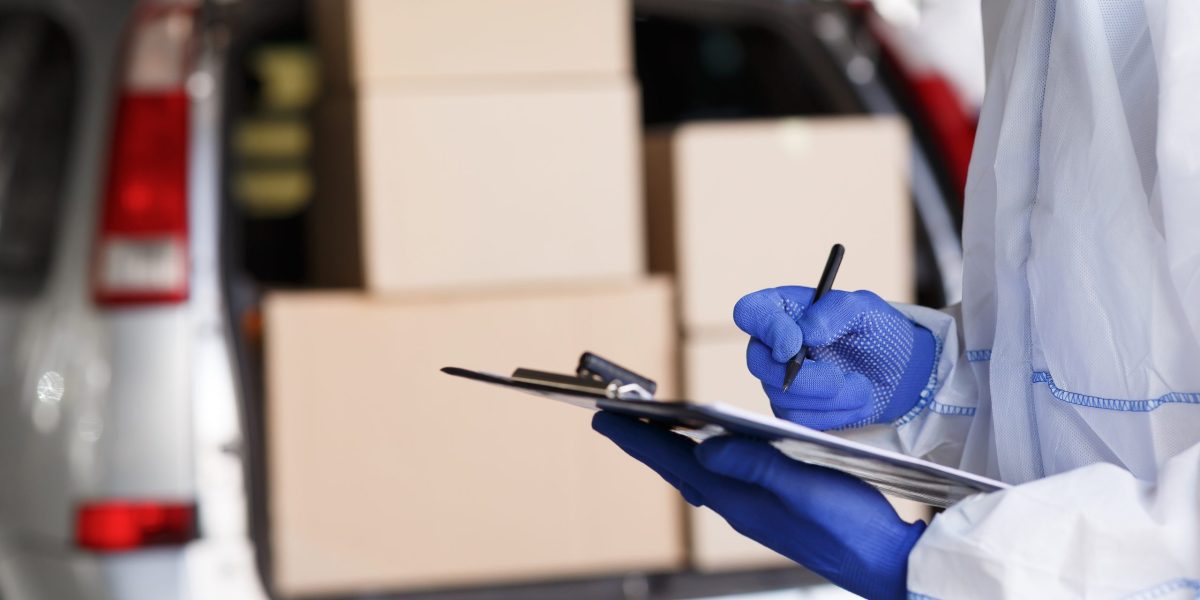Medical logistics is the unsung hero of modern healthcare. It ensures life-saving medications, lab specimens, and medical equipment reach the right place at the right time. As healthcare systems worldwide shift toward patient-centric, value-based care, the stakes are higher than ever. Yet, courier challenges, increasing costs, and the need for flawless coordination continue to plague the system.
This article explores the evolving landscape of medical logistics, the critical healthcare delivery ecosystem, common pain points in courier challenges, and strategic insights into achieving long-term cost control.
Understanding Medical Logistics in 2025
Medical logistics is essentially the planning, execution, and management of the safe and effective transportation of medical supplies. These include hazardous items, surgical tools, prescription drugs, and vaccinations.
In 2025, the landscape is shaped by:
- A growing demand for home-based care
- Global health crises and pandemic readiness
- The surge in biotech and gene therapy deliveries
- The expansion of telehealth and virtual pharmacy services
Medical logistics now intersects technology, compliance, and patient safety more than ever before.
The Evolution of Healthcare Delivery
Once confined to hospital walls, healthcare has spilled into homes, remote clinics, and mobile platforms. Healthcare delivery has evolved dramatically:
- Telemedicine requires prescription fulfillment from afar.
- Remote monitoring needs timely equipment delivery.
- Elder care increasingly happens at home, demanding mobility in services.
Medical logistics is the critical link connecting providers, pharmacies, labs, and patients in this new paradigm.
Key Courier Challenges in Medical Logistics
Despite technological progress, several persistent courier challenges remain in medical logistics:
Time Sensitivity
Many deliveries, especially organs, blood samples, or vaccines, are time-critical.
Handling Protocols
Improper handling during transport can compromise product integrity.
Traffic and Route Disruptions
Urban congestion and weather delays often disrupt delivery schedules.
Lack of Trained Couriers
Medical couriers need more than just delivery skills they require specialized training in compliance, temperature control, and emergency handling.
These courier challenges directly impact service quality and patient outcomes.
Cost Control: The Backbone of Medical Transportation
Healthcare systems are under pressure to reduce costs without compromising quality. Medical logistics, though essential, can be expensive:
- Fuel and fleet maintenance
- Cold chain storage
- Insurance and liability
- Redundant systems for backup
Controlling logistics expenses while maintaining reliability is one of the most difficult balancing acts in the healthcare industry.
The Impact of Delays in Medical Deliveries
When a delivery is late or mishandled, the results can be devastating:
- Delayed lab results delay diagnosis.
- Late medication delivery risks patient non-compliance.
- Interrupted surgical supply chains stall operating rooms.
Medical logistics must function like clockwork. Any lapse can lead to health risks, legal complications, and loss of public trust.
Technology’s Role in Transforming Healthcare Delivery
Modern solutions are turning the tide on courier challenges:
- Real-time GPS tracking ensures location transparency.
- Electronic signatures and scanning ensure proof of custody.
- Predictive analytics help preempt disruptions and reroute deliveries.
Smart systems mean fewer missed appointments and fewer lost packages key wins in healthcare delivery.
Temperature-Sensitive Shipments: A Logistic Puzzle
One of the most complex aspects of medical logistics is managing temperature-sensitive goods:
- Vaccines, insulin, biologics, and chemotherapy agents require specific temperature ranges.
- Deviation from cold chain protocols can lead to spoilage, risking patient health and legal consequences.
IoT sensors and temperature loggers now help track environmental conditions in real-time during transit.
Compliance, HIPAA, and the Legal Landscape
Compliance is not optional. Medical couriers must adhere to:
- HIPAA regulations for patient data protection
- OSHA for biohazard safety
- FDA and DEA guidelines for prescription medications
The logistics partner you choose must be as invested in compliance as you are in patient outcomes.
Innovative Approaches to Courier Challenges
Innovation is key to navigating courier challenges. Successful organizations implement:
- Hybrid delivery models combining internal fleets with third-party partners.
- Micro-distribution hubs closer to patient homes.
- Drones and autonomous vehicles in trial stages for rapid delivery.
These methods improve delivery speed, reduce costs, and extend reach to remote areas.
Training, Staffing, and Human Factors
Behind every delivery is a human being. And behind successful medical logistics is:
- Rigorous training in biohazard handling, HIPAA, and patient interaction.
- Soft skills development for professional, empathetic communication.
- Mental health support for couriers facing stress and fatigue.
Human error is a top reason for failures in medical logistics—better training reduces that risk.
Last-Mile Delivery Solutions
The “last mile” is often the most difficult and expensive part of healthcare delivery. Common issues include:
- Narrow delivery windows
- Gated communities or rural roads
- Security access issues in hospitals
Technology like route optimization software, secure delivery lockers, and patient scheduling platforms are revolutionizing last-mile solutions.
AI and Automation in Medical Logistics
Artificial Intelligence is empowering logistics professionals to:
- Forecast delivery windows
- Detect supply chain weaknesses
- Optimize vehicle usage
Automation in warehouses, dispatch centers, and even courier vehicles means faster and more accurate deliveries crucial in healthcare delivery.
How Data Analytics Drives Cost Control
Modern logistics is data-rich. Smart organizations are using data analytics to:
- Monitor KPIs like delivery time, route efficiency, and spoilage rates
- Predict inventory needs to reduce waste
- Identify high-cost areas and implement cost-cutting strategies
In 2025, cost control is as much about visibility as it is about cutting.
Case Studies: Medical Logistics Done Right
Case Study 1: Urban Blood Bank Network
A national blood bank reduced delivery delays by 45% using real-time courier tracking and temperature sensors.
Case Study 2: Hospital-At-Home Program
A hospital reduced readmission rates by delivering oxygen equipment and medications within 2 hours of discharge.
Case Study 3: National Lab Courier Service
By switching to electric vehicles and optimized routes, a national lab saved $300,000 annually while improving delivery reliability
Sustainability in Healthcare Transportation
With healthcare contributing to nearly 10% of global carbon emissions, sustainability is rising in importance:
- EV fleets reduce carbon output.
- Route optimization cuts fuel use.
- Paperless systems improve efficiency and compliance.
Today, cost control includes environmental costs as well.
Challenges of Urban vs Rural Medical Delivery
While urban deliveries suffer from traffic and density, rural areas face distance and infrastructure gaps.
Key rural courier challenges include:
- Limited cold chain infrastructure
- Fewer route optimization options
- High per-delivery costs
Hybrid logistics models, including drones and mobile hubs, are proving useful in rural healthcare delivery
Building Patient Trust through Reliable Delivery
Patients today expect their medical deliveries. Couriers are no longer anonymous middlemen—they are part of the healthcare experience.
- SMS updates about delivery times
- Feedback mechanisms post-delivery
- Professional branding on vehicles and uniforms
Consistency builds trust and trust drives compliance and health outcomes.
Future Trends in Healthcare Delivery and Logistics
Medical logistics seems to have a bright future because to: Hyperlocal delivery hubs for on-demand medical services
- Blockchain for transparent and safe data processing
- Coordinating treatment and delivery via a single interface is known as telehealth-integrated logistics.
- Individualized administration of tailored treatments
These developments go beyond what was possible ten years ago in terms of healthcare delivery, in addition to addressing courier issues.
The core of contemporary healthcare is medical logistics. It affects how quick, secure, and efficient our healthcare delivery systems are, from handling courier difficulties to attaining long-term cost management.
Operational excellence, technology innovation, and human sensitivity must all be combined for success in this field. Understanding the intricate network of medical logistics is essential to influencing the direction of medicine, regardless of your role as a logistics provider, healthcare executive, or patient advocate.
In addition to cutting costs, investing in robust processes, skilled staff, and cutting-edge technology will enhance care outcomes one delivery at a time.
Read More: How MSI’s White-Glove Delivery Elevates Patient Care







